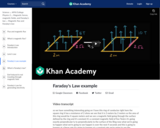
Example calculating induced current based on change in flux.
- Subject:
- Physical Science
- Physics
- Material Type:
- Lesson
- Provider:
- Khan Academy
- Provider Set:
- Khan Academy
- Author:
- Sal Khan
- Date Added:
- 10/12/2015

Example calculating induced current based on change in flux.

How Faraday's Law is used to generate electricity in turbines.

Sal solves a Bernoulli's equation example problem where fluid is moving through a pipe of varying diameter. Created by Sal Khan.

Sal finishes the example problem where liquid exits a hole in a container. Created by Sal Khan.

Using our understanding of fluid pressure to figure out the height of a column of mercury. Created by Sal Khan.

Overview of the first law of thermodynamics.
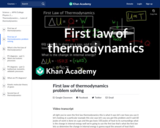
Worked example of the first law of thermodynamics.

Introduction and intuition for flux and magnetic flux.

Explore the forces at work in a tug of war or pushing a refrigerator, crate, or person. Create an applied force and see how it makes objects move. Change friction and see how it affects the motion of objects.
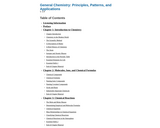
The overall goal of the authors with General Chemistry: Principles, Patterns, and Applications was to produce a text that introduces the students to the relevance and excitement of chemistry.Although much of first-year chemistry is taught as a service course, Bruce and Patricia feel there is no reason that the intrinsic excitement and potential of chemistry cannot be the focal point of the text and the course. So, they emphasize the positive aspects of chemistry and its relationship to studentsŐ lives, which requires bringing in applications early and often. In addition, the authors feel that many first year chemistry students have an enthusiasm for biologically and medically relevant topics, so they use an integrated approach in their text that includes explicit discussions of biological and environmental applications of chemistry.
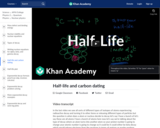
Carbon dating is a real-life example of a first-order reaction. This video explains half-life in the context of radioactive decay. Created by Sal Khan.

Definition of half-life and graphing the decay of phosphorus-32. Calculating how much phosphorus-32 remains after 57.2 days. Created by Jay.
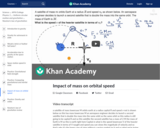
Example question exploring how mass impacts orbital speed.

Sal determines the current and EMF induced in a wire pulled through a magnetic field. Created by Sal Khan.
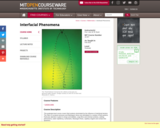
This graduate-level course covers fluid systems dominated by the influence of interfacial tension. The roles of curvature pressure and Marangoni stress are elucidated in a variety of fluid systems. Particular attention is given to drops and bubbles, soap films and minimal surfaces, wetting phenomena, water-repellency, surfactants, Marangoni flows, capillary origami and contact line dynamics.
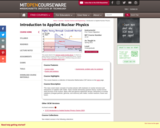
This class covers basic concepts of nuclear physics with emphasis on nuclear structure and interactions of radiation with matter. Topics include elementary quantum theory; nuclear forces; shell structure of the nucleus; alpha, beta and gamma radioactive decays; interactions of nuclear radiations (charged particles, gammas, and neutrons) with matter; nuclear reactions; fission and fusion.
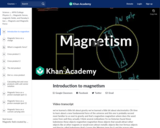
An introduction to magnetism. Created by Sal Khan.

Intuition behind formula for thermal conductivity.

In this video David explains how the internal energy of a gas varies as a function of temperature. Created by David SantoPietro.

Kirchhoff's Current Law says the currents flowing into a node must add up to zero. Created by Willy McAllister.